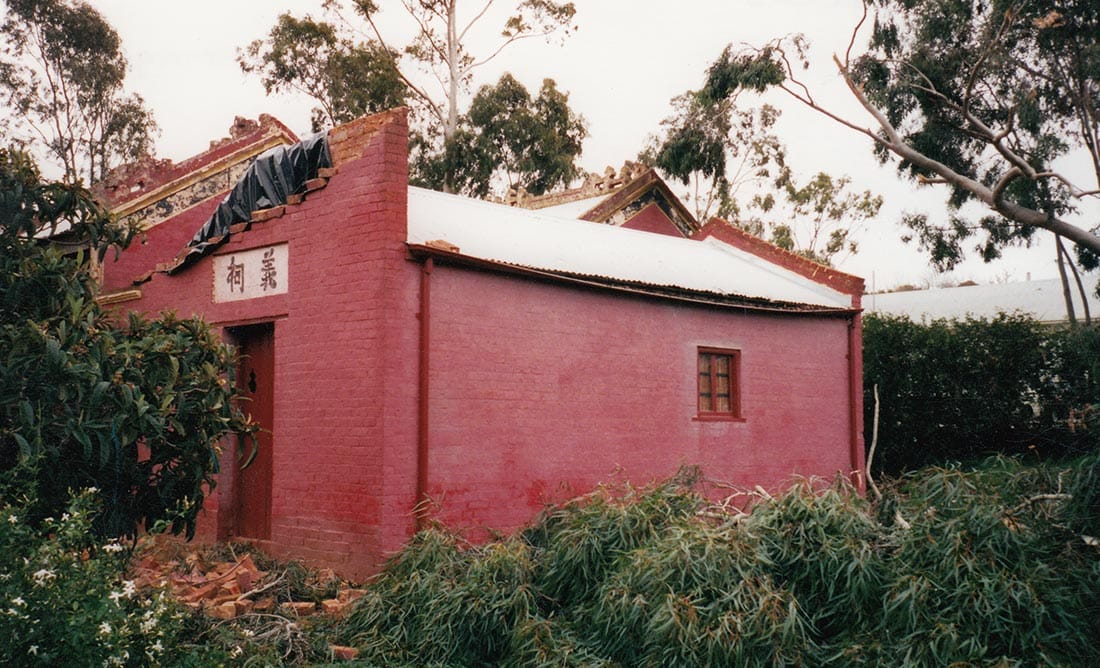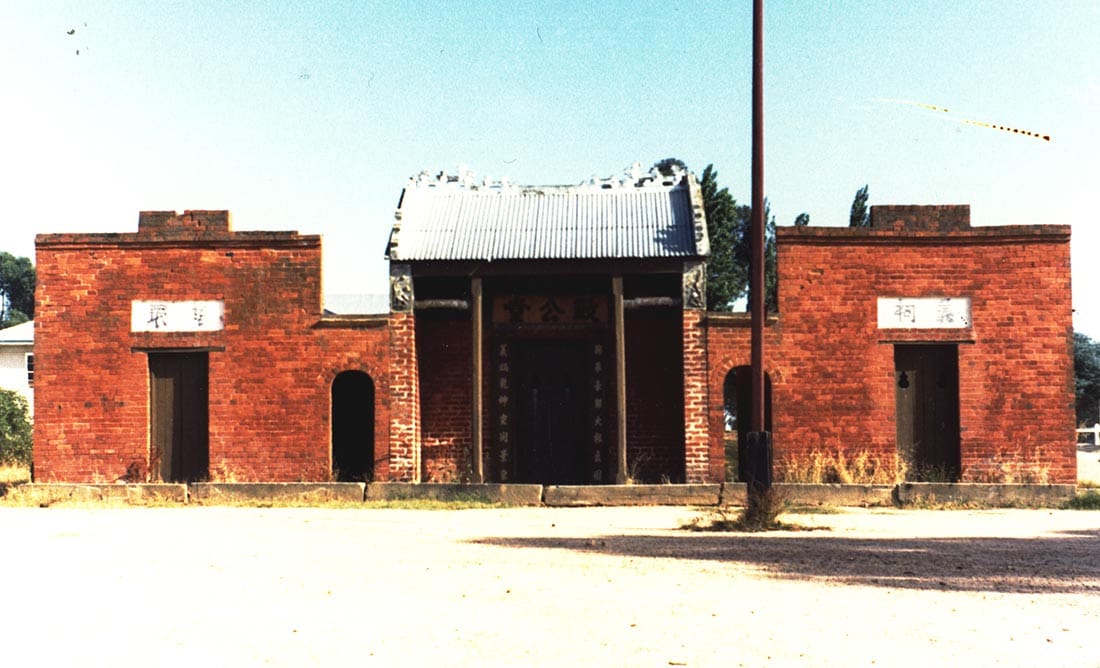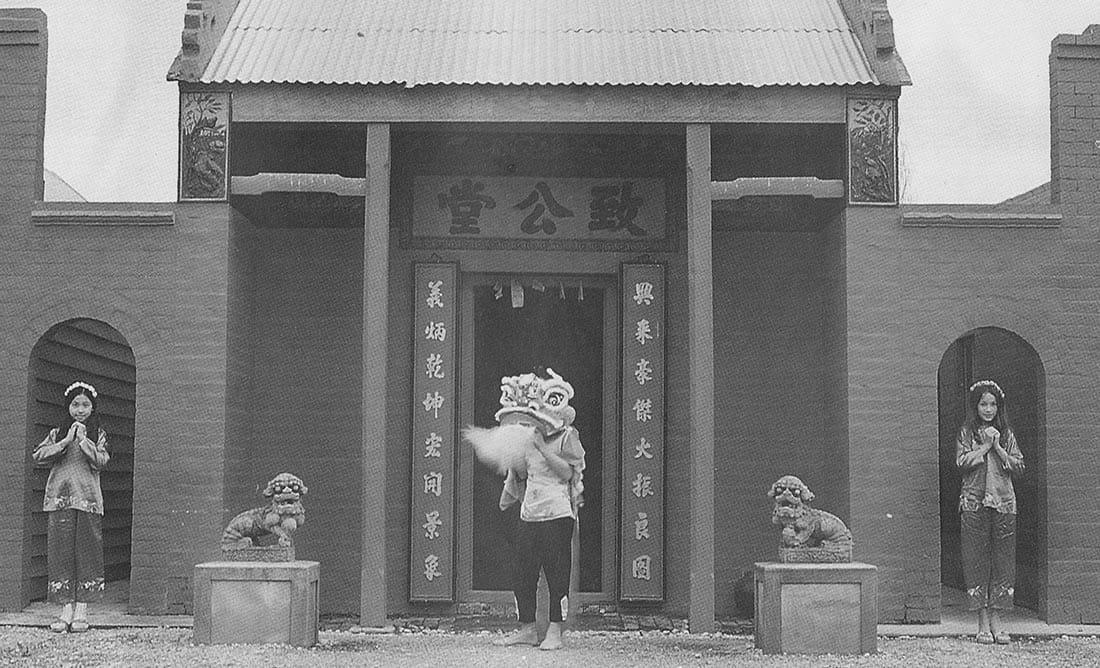The Bendigo Joss House Temple, a Chinese place of prayer, was opened in 1871. Standing for over a century, the Bendigo Joss House Temple is one of the few remaining buildings of its type in Australia.
Constructed with locally handmade bricks and painted red, symbolising the traditional Chinese colour denoting strength and vitality, the Bendigo Joss House Temple provides a glimpse into Chinese culture and tradition.
The Main Temple is dedicated to Guan-Di (Kwan Gong), a Han Dynasty general who brought peace and justice to China after the dynasty collapsed. He was subsequently deified as the State God of War, but universally viewed “as a wise judge, guide, protector and bringer of wealth and prosperity”.
The temple was one of seven Chinese temples built around this area to serve the large Chinese population on the goldfield. This particular temple was part of a large Chinese camp known as the Ironbark Camp, established in 1855. It continued to be used as a temple and meeting place until the 1930s.
The temple fell into disrepair after being abandoned by the declining Chinese mining population. The Commonwealth acquired the wider site in 1941, clearing the old camp site but sparing the temple when Sir John Jensen, Assistant Secretary for the Department of Supply, refused permission for its demolition.
The National Trust of Australia (Victoria) obtained permissive occupancy of the temple in 1965, and after restoration it was opened to the public in 1972.
The City of Greater Bendigo took over ownership of the temple when the National Trust relinquished responsibility, and the building has been managed by Bendigo Heritage Attractions since 2007.
The Bendigo Joss House Temple is of architectural, historical and social importance to the State of Victoria.
The Bendigo Joss House Temple is of architectural importance as an extremely rare form of religious building constructed in the Chinese tradition of temple building.
The Bendigo Joss House Temple is of historical importance to the State of Victoria in its ability to act as a tangible link to the lives and religious practices of the Chinese immigrants who came in large numbers to the Victorian goldfields during the second half of the 19th century.
The temple is rare as a surviving structural artefact of that culture and period when so little else remains. The ephemeral nature of the way of life on the goldfields has meant an almost total loss of evidence of this cultural group and the survival of this building makes it unique in Victoria.
The Bendigo Joss House Temple is of social significance for providing a rare opportunity for Chinese people or people of Chinese descent to practise or re-connect with traditional ways of worship in authentic surroundings.
Heritage Status
- Statutory Listings:
- Victorian Heritage Register (VHR), Number: H1791 (Bendigo Chinese Temple) – Heritage Victoria;
- Bendigo Planning Scheme, Heritage Overlay Number: HO581 (Bendigo Chinese Temple [Joss House]) – City of Greater Bendigo
- Non-statutory listings:
- Register of the National Trust, File No B1949, National (Chinese Joss House – Chinese Masonic Hall) – National Trust of Australia (Victoria);
- Register of the National Estate, Place ID 4301, Registered (Chit-Kung-Tang Joss House) – Australian Heritage Council.





